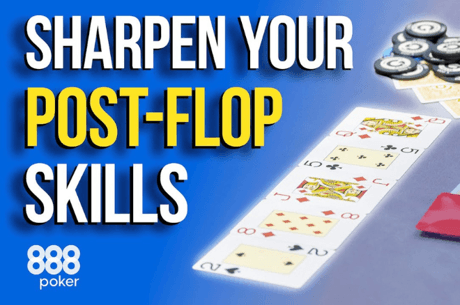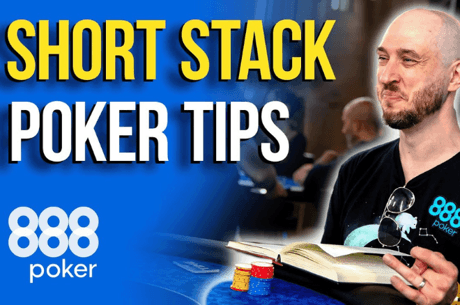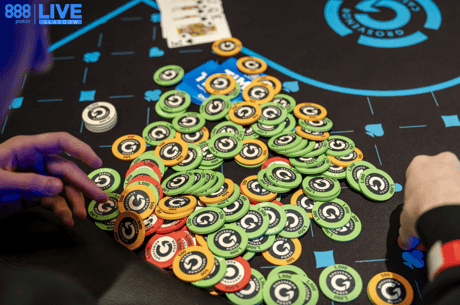11 Useful Observations for Entry-Level No-Limit Games

A lot has been written about tells in poker — that is, players' unconscious behavior that helps to give away the true strength or weakness of their hands.
Unfortunately, perhaps because tells have been glamorized in the movies, many new and intermediate players tend to focus more than they should on trying to discover tells. In so doing they may be missing the often more useful observations they could be making about an opponent's more overt behaviors and betting habits at the poker table.
This article is meant to correct that mistaken emphasis by addressing 11 behaviors of typical opponents, especially in low-limit games. I'll present each one as a question for which knowing the answer can be especially useful to you when playing against these players.
1. Do they appear never to bluff?
There are players whose bets and raises mean exactly what they imply. When they bet they are strong, and when they raise they are extremely strong. Notice and remember these players. You never need to worry that you are being deceived by them. When they are the aggressor, never ever give them any action without an extremely strong hand.
2. Do they ever three-bet preflop and raise postflop without great strength?
The vast majority of players will rarely three-bet preflop or raise after the flop without a very strong hand. However, there are a few players who will do this from time to time for purposes of deception, pot-size manipulation, or to limit the field and get heads-up. Take note.
3. Do they check-raise?
Few players do this in no-limit hold'em. Excellent players tend to avoid the maneuver because in no-limit they have the ability to size their bets to fit their purpose without the risk that they may check and their opponent may check behind. Meanwhile lesser-skilled players tend not to be sophisticated enough to even consider the move.
Noticing which players do check-raise allows you the opportunity to check behind them if you think they are trying to set up this play while still betting for value against the vast majority of opponents who won't engage in a check-raise no matter how strong or weak they are.
4. Do they slow play?
Most players are capable of slow playing their sets when they hit them, only coming out with a raise on the turn or river. Some always, or nearly always, bet their strong hands — even their extremely strong hands — for value. Knowing who does what will help you avoid getting trapped.
5. Are they position-sensitive?
At the very least, at the beginning and intermediate levels, opponents often can be put into the basic category of those who make adjustments to their play based on their position, and those who don't. You needn't have have a detailed "book" on every player — just keep track of those on either end of the spectrum.
6. How broad are their preflop calling and raising ranges?
With their position-sensitivity in mind, how broad are their ranges? The broadest distinctions are most important at this level. Keep track of those who play an extremely narrow range and those who may be playing just about any two cards.
7. Do they tend to continuation bet when the preflop aggressor? And if so, what is their c-betting frequency?
This is information made readily available when using a "heads-up display (or "HUD") when playing online. It's obviously very useful to keep track of when playing live as well. Again, focus on recognizing those t either extreme — that is, those who never do this and those who do this always (or almost always).
8. Do they habitually stare at the flop?
We're edging over into the "tells" category with these last few questions about common behaviors. Most (but surely not all) beginning and intermediate players stare at the flop without any intention to deceive. When they stare for more than a moment they tend not to have hit it. When they look at it and then look away they tend to be strong.
Observe this, and then keep track of who seems to follow these habits most straightforwardly. It will pay off when you're heads-up against these opponents.
9. Do they reveal in advance their intention to fold?
Many players, including otherwise good strategic players, impatiently and without thought grab their cards or position their cards in anticipation of a fold. This is extremely useful information, especially if they follow you in the betting action.
10. Are they "actors"?
Many are at this level. They're usually bad actors, so their behavior indicating weakness tends to indicate strength and vice-versa. The most common acts tend to be the "sighing" and "chip grabbing." They grab chips before it is their turn, hoping to look strong and eager to bet, and thereby intimidate their opponents into checking. They will also "sigh" to feign disappointment with their hand.
You can often win the pot by betting into those who do the former, while avoiding a loss by folding to any bets from the latter.
11. Do they engage in any reverse tells?
A small but definite percentage of players deliberately fake a well-known tell (like staring at the flop) to deceive their opponents. This isn't too common, but do make a mental note if you see someone do this. It will come back to you if you're in a heads-up battle later.
Conclusion
These largely conscious and obvious behaviors are usually much more common and revealing than the unwitting "giveaway" tells you see in the movies. Observing them and making adjustments in your play to take advantage of them can often be the difference between winning and losing in a typical entry-level no limit hold'em game.
Ashley Adams has been playing poker for 50 years and writing about it since 2000. He is the author of hundreds of articles as well as Winning 7-Card Stud (Kensington 2003). He is also the host of poker radio show House of Cards. See www.houseofcardsradio.com for broadcast times, stations, and podcasts.









